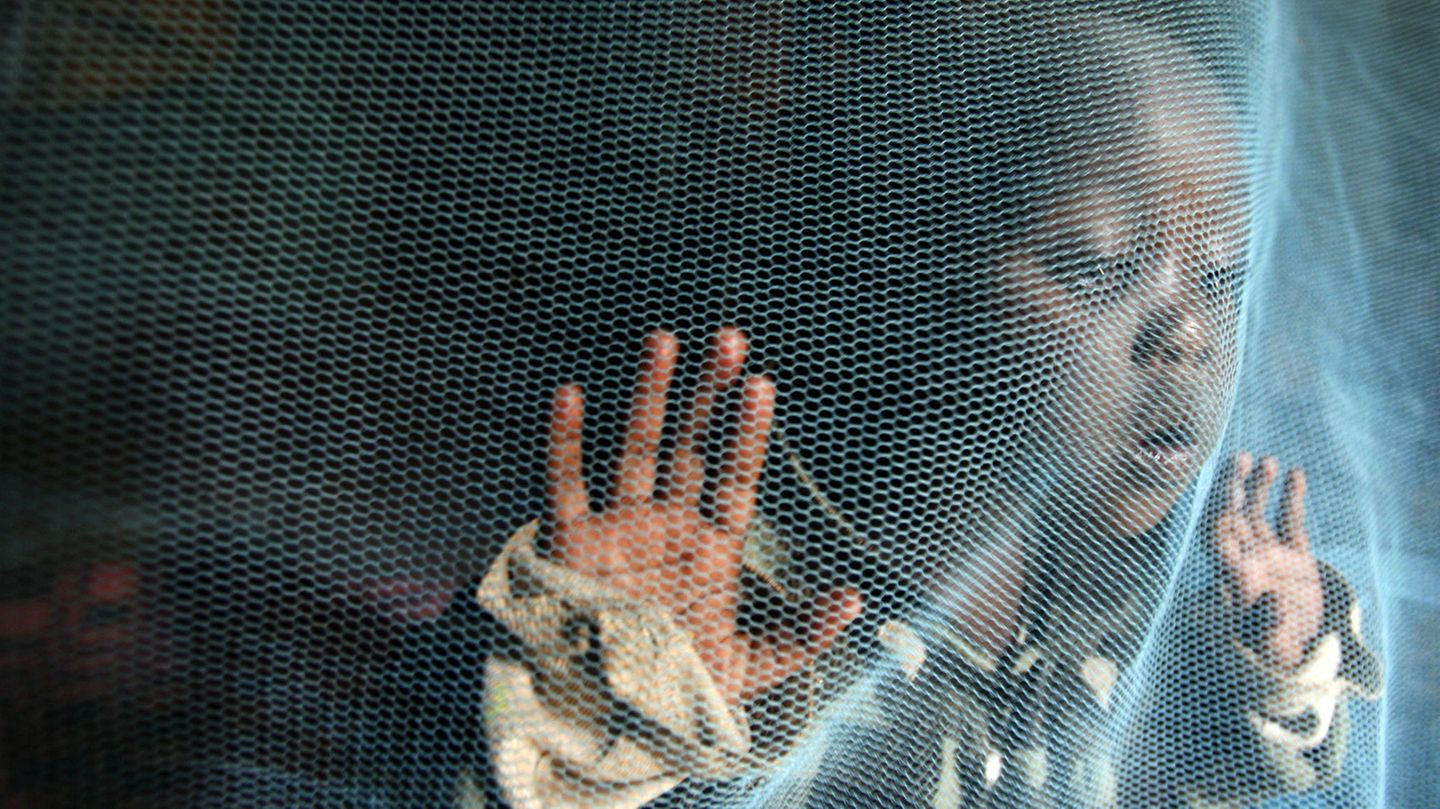The Global Fund aims to eliminate malaria, HIV and tuberculosis by 2030. But the goal seems unattainable
A boy stands behind a mosquito net in Nairobi. Climate change is contributing to the spread of the Anopheles mosquito and therefore malaria
© Stephen Morrison / DPA
A world without malaria and the like sounds utopian. The Global Fund organization still believes this is realistic – even though the interim goals have already been missed and climate change is making the fight even more difficult.
Malaria, HIV and tuberculosis are expected to be eradicated by 2030. The goal of the World Health Organization (WHO) seems utopian, but according to the head of the Global Fund, Peter Sands, it is still achievable. Since 2002, the charity founded by Bill Gates and his ex-wife Melinda has been supporting various countries in the fight against tuberculosis, malaria and AIDS. Since then, the organization has made remarkable progress: according to the results report, which the stern was allowed to view before publication, 59 million lives have been saved in the past 20 years. The number of deaths caused by AIDS, malaria and tuberculosis has more than halved.
The organization achieved its greatest success in the fight against HIV. According to the report, the number of AIDS deaths has fallen by 72 percent compared to 2002 – particularly in the sub-Saharan and Asia-Pacific regions. According to the Global Fund, 39 million people were living with the virus in 2022 and 630,000 died as a result of the disease.
Tuberculosis and malaria continue to spread
The fight against tuberculosis was significantly less successful. The fatal course of lung disease has only fallen by 16 percent in the last twenty years. By 2025, the infection rate should actually be halved and the number of deaths should fall by 75 percent. But even before the corona pandemic, the fight against tuberculosis was lagging far behind the goals and Corona has exacerbated the setback.
According to the Global Fund, tuberculosis infections increased by almost five percent to over ten million between 2019 and 2021. The number of victims rose from 1.4 to 1.6 million. During the pandemic, only a third of the cases were discovered and treated. And the pathogen is becoming increasingly resistant because the corresponding drugs have been used for decades. But there is some positive news: more cases were discovered last year and can be treated accordingly.
Asian tiger mosquito Climate change brings tropical diseases – should we be afraid of mosquitoes?
18.08.2023
The Global Fund has recorded a 27 percent decline in malaria deaths since 2002. More people died from the pathogen during the pandemic, which “has wiped out years of progress in fighting the disease,” the results report says. The malaria pathogen is also becoming increasingly resistant to the medications used.
At the same time, climate change is contributing to the expansion of malaria areas. Due to global warming, the Anopheles mosquitoes responsible for transmission are reaching countries and regions where it was previously too cold for them. Environmental disasters such as floods combined with sweltering heat also create the ideal breeding ground for mosquitoes and the spread of malaria. By 2030, the mortality rate should fall by 90 percent. The Global Fund has missed the interim targets of 35 deaths per year and 1,000 inhabitants in a region in 2021.
The fight against malaria and the like is probably not hopeless
According to Global Fund data, the number of malaria and tuberculosis cases and deaths will only continue to decline slightly or remain stagnant by 2030. Only the fight against HIV could come closer to the goal declared by the WHO. In any case, the goals are missed. “We were already off track before the pandemic and continue to be,” admits Global Fund boss Peter Sands at the press conference for the results report.
Several crises also make it more difficult to combat diseases: political conflicts endanger the health infrastructure of affected countries. Climate change and environmental disasters mean that pathogens continue to spread. And water shortages and migration promote tuberculosis, for example in Ukraine. Before the war, the government in Kiev had achieved good success in the fight against the disease, reports Sands. Since Russia invaded the country, little is known about the number of infections – except that it has increased.
Despite everything, Sands refuses to declare the fight against tuberculosis, malaria and AIDS hopeless. “We know what to do, have effective antidotes and can learn from successful examples,” he explains. Resilient health systems are essential to contain diseases and prevent new ones. During the corona pandemic, the Global Fund provided five billion dollars to support various countries. $2.2 billion went into health systems and pandemic preparedness.
One thing is particularly important, says Sands: States must become aware of how closely climate change and migration are linked to global health.
#Subjects
